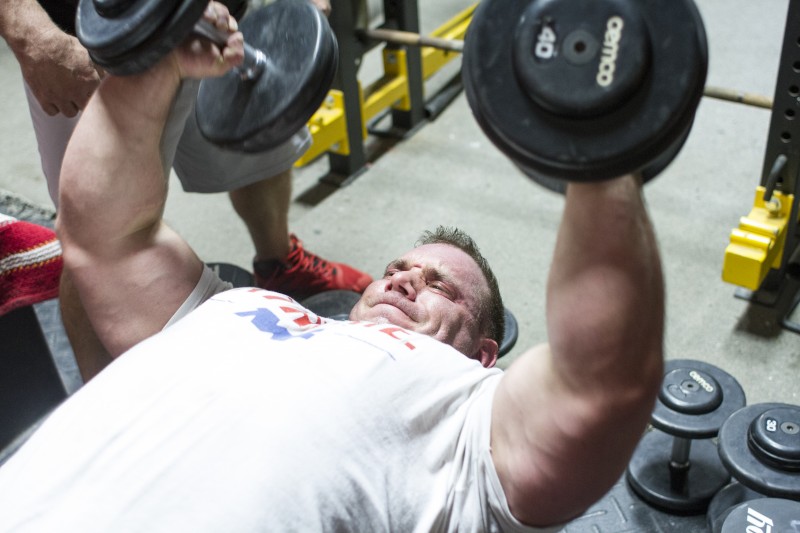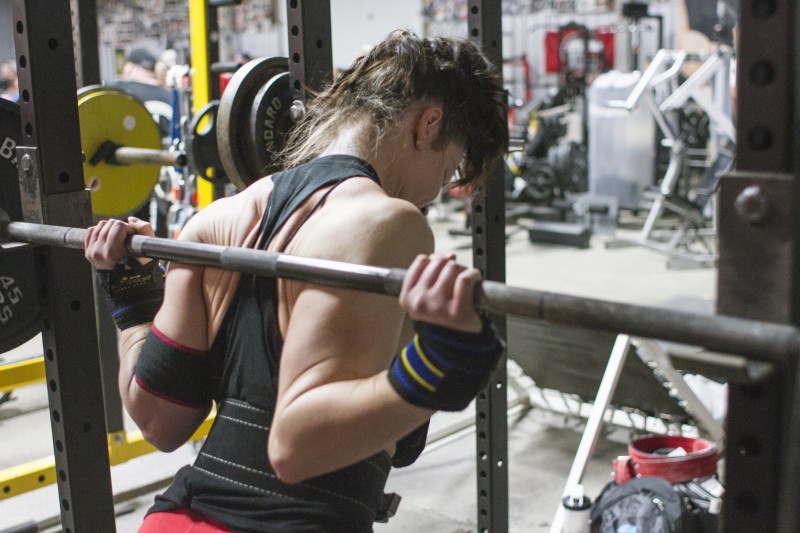
How do you periodize intensity techniques? In powerlifting and Olympic lifting, it's a straightforward definition: percentage of one-rep max. In bodybuilding, everyone trains "intense" by their own account. Intensity is much talked about in bodybuilding, but the reality is that there is no set definition of what "intensity" is.
Is it taking sets to failure? Lots of volume? Dropsets? Supersetting?
RECENT: Relentless Hypertrophy Revisited
What bodybuilders are describing are their perceived efforts in their training. This has a few components to it:
- Level of muscular innervation (i.e. mind-muscle connection)
- Reaching complete muscular fatigue within the targeted muscle
- The level of focus, which can be defined as the relationship between mental focus and physical effort
An intense workout for a bodybuilder is one where they worked themselves to a deep state of muscular fatigue, performed their reps with a powerful mind-muscle connection, and they were "in the zone" during their training session.
Context Established
Within the framework of bodybuilding, intensity techniques refer to tactical methods that can be used during a training session to increase the difficulty of any given movement. These techniques increase the demands on mental focus, produce higher levels of muscular innervation, and lead to greater levels of muscular fatigue.
There are many such techniques, such as:
- Ramping Sets — Ramping up quickly in weight to a max
- Dropsets — Lighter sets performed to failure
- Rest Pause Set — Moderate to heavy sets performed with minimal rest
- Timed Sets — Performing as many reps as possible within a given time frame
- Cluster Sets — Low reps sets done together
- Back-Off Sets — Reversing down in weight
- Pyramids — Working high rep to low rep, lightweight to heavyweight
- Static Holds — Holding a weight in a mechanically difficult position for a given period of time
- Isometric Holds — Actively squeezing a weight with a ROM for a given period of time
- Tempo — Slowing down the eccentric or concentric
- Mechanical Advantage Sets — Modifying the movement to become easier as the muscle starts to fatigue
- Partial Reps — Performing a partial ROM
- Supramaximal Reps — Also called overload reps, supporting a weight that is more than your max for a set period of time
- Eccentric-Only Reps — Emphasizing only the negative portion of the rep range with a maximal or supramaximal load
- Alternating Static Holds — Best done with dumbbells or cables, holding a weight in the contracted or starting position while performing reps with the opposite arm
- Accommodating Resistance Reps — Using accommodating resistance such as bands and chains
- Complementary Sets — Performing two exercises back-to-back that work similar ROMs
- Forced Stretch — Performing a weighted stretch or an intense static stretch following a movement
That is a lot to use. And there is nothing in the body of evidence and research that clearly says how to specifically use all of these things. Planning/periodization concepts can be applied, but much of "intensity" techniques are used on a case-by-case basis, rather than being an integral part of a program.
Swede Burns is someone I've learned a great deal from, and he makes a very good point in his 5thSet methodology regarding intensity techniques: long-term increases in muscular size are best predicated on progressive overload over time. A bigger muscle is a stronger muscle is a bigger muscle is a stronger muscle. Perform more reps to handle more weight to handle more reps to move more weight.
The fundamental issue with periodizing intensity techniques is progression; there is no defined way to make progress long-term with most of them, aside from simply using heavier weights or more reps with whatever the given intensity technique is. So even when progressive overload is not being used, it is still at play.
A few considerations...
Means of Periodization
All factors considered, how can intensity techniques be used in an actual program? I don't have a perfect “system” to offer you. The sheer variety of possibility makes such a thing impossible. Despite the abundance of possibilities, however, there is actually a very simple filter to use when planning out intensity techniques in training.
Are you making the reps themselves harder? Or changing how you perform the movements?
Or...
Are you adding overall volume to your training?
You can take these two questions and create two categories of intensity techniques.
1. Volumizers — Any technique that increases training volume (reps performed) in some way: pyramids, dropsets, ramping sets, supersets, trisets, higher reps, partial reps, back-off sets, etc.
2. Intensifiers — Any technique that makes the reps themselves harder in some way: tempo changes, static holds, isometric reps, accommodating resistance with bands and chains, changing mechanics of the movements, unilateral work, etc.
These two categories create a very reasonable means to plan out intensity techniques, and if you view popular bodybuilding programs through these filters, you will see that they ALL have the above characteristics in common.
Y3T — Created by Neil Hill, Y3T is triphasic, with training progressing in three-week cycles. Y3T starts with heavy weight and moderate volume in week one. In week two, the intensity is increased with higher rep ranges. In week three, the intensity is increased through volume increases of supersets, trisets, and dropsets.
Mountain Dog Training — John Meadows typically plans out training in four-week cycles. In weeks one through four, volume increases. In weeks five through eight, intensifier techniques are used. In weeks nine through 12, volume is lowered but intensity techniques are kept in.
What about a conjugate training system? The principles are very similar.
- You perform maximal reps for practice with maximal loads.
- You perform dynamic reps, often with accommodating resistance or different implements, to improve force production and technique.
- You perform higher reps (repetition method) to build up the needed muscle tissue to do one and two.
Conjugate training is using multiple methods in the same training week to promote multiple forms of adaptation. That, in and of itself, is not a difficult concept to understand.
Another example of a “weekly” system is Fortitude Training. This is Scott Stevenson's training system. Within a given week, you will perform:
- High-rep sets
- Loading sets, a modification of pyramid sets
- Cluster sets (Muscle Rounds)
- Sets taken to positive failure, and past failure
Final Thoughts
I don’t have any grand theory to offer here, just questions that you should probably ask yourself.
- At a certain point, the body cannot infinitely be loaded with heavier and heavier weights. As you approach your own upper limit for strength size, you will need to incorporate novelty into your training to make continual progress. This limit will be different person to person.
- "Novel" techniques can be used for short periods of time to push adaptation forward. Novel stimulus does promote adaptation.
- For intermediate and advanced lifters, novel strategies can be psychologically engaging and break someone out of training "staleness."
- Intensity techniques must be used with some objective measurement if you want to assess their effectiveness. Taking a kitchen sink approach is appealing, but it's more often the psychological satisfaction in having "destroyed" one's self than there being a measurable benefit.
- Intensity techniques can potentially be used by all levels of trainees, but specificity must be applied. What is the rationale behind using x, and what effect are you hoping to derive from it?
- Beginners that do not know how to auto-regulate their training are more prone to becoming sidetracked by intensity techniques than veteran lifters. Stick with straight sets and conventional loading.
- Before deciding to use intensity techniques, the question must be asked whether the gains from conventional "linear" sets have been truly exhausted.
- The most elite bodybuilders and powerlifters in the world have historically used low, moderate, and high reps and focused on incremental improvements over time.
- Intensity techniques can be used to increase training longevity by increasing the difficulty of a given movement while lowering the training of said movement. "Making light weights feel heavy" is a valid strategy. Muscular damage is NOT solely dependent on the quantified load and can be accomplished many different ways.












